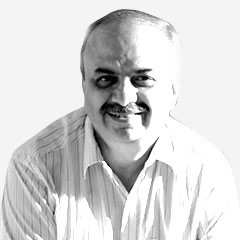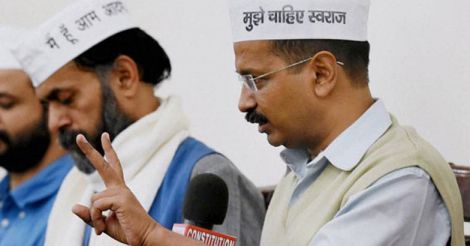One man one post policy has caused lot of controversies in the Congress party in its long history. Interestingly, the top man occupying two posts rocked the newest political party in the country. Senior members of the Aam Aadmi Party were suggesting that Arvind Kejriwal, who has become full time Chief Minister of Delhi, should give up the convenorship of the party, so that he could concentrate on fulfilling promises given to the Delhi electorate. However Kejriwal was in no mood to agree for losing control over the party he founded along with the members of the anti corruption movement in 2013.
Prominent members of the party's political affairs committee Yogendra Yadav and Prashant Bhushan felt that Kejriwal wanted to run the party through his proxies, and that such concentration of power in one man, however good he is, is not good for democracy or the party. They felt that the AAP will suffer the personality cult which is the dominant feature of Congress as well as many regional parties.
Kejriwal achieved a legendary status due to the sweeping victory in Delhi elections and his close circles felt that it was his magnetic personality and political craft which won the Delhi elections, and that he could afford a second centre of power in the Aam Aadmi Party. Kejriwal's inner circle included Deputy Chief Minister Manish Sisodia, his ministers and former journalists like Ashish Khetan and Ashutosh. This inner circle has not tolerated the high profile assumed by Yadav, who had been regularly briefing the media and who has ambitions of becoming chief minister of Haryana, despite his miserable defeat in the Lok Sabha elections. Bhushan was targetted because he and his father Shanti Bhushan had stayed away from the campaign, as they felt Kejirwal had sold tickets to win over strong candidates from the rural borders of Delhi.
In Congress the first cry against such concentration of power came when Prime Minister Jawaharlal Nehru also became the Congress president. There were murmurs that this was the apex of personality cult. Soon his daughter Indira Gandhi had become Congress president when the father was the prime minister. Indira again became president in 1978 January when the party split following the emergency, but she was not in power. She led the party to sweeping victory and kept both the posts for five years till her assassination in 1984. Her son Rajiv Gandhi also combined the two posts for five years, and even when in opposition was both Congress president and leader of the opposition in Lok Sabha. There were not many challenges against either Indira or Rajiv.
But after Rajiv's assassination during the 1991 election campaign, Narasimha Rao became the interim president of the Congress. When the Congress formed the government at the Centre, Rao edged out Arjun Singh and Sharad Pawar to become the Prime Minister. Rao chose to keep both the posts. Dissidents prompted by Arjun Singh staged a demonstration in the Faridabad session of AICC in 1993 demanding that Rao should adhere to the one man one post policy. Rao who controlled both party and the government got a resolution passed which exempted the Congress president from the post.
The BJP Separated the posts in a de jure manner, but its hierarchy was clear. Number one was Atal Behari Vajpayee and next came L.K. Advani and now it is Narendra Modi. Prime Minister Modi enforced the one man one post on Rajnath Singh who was party president in the elections which brought BJP to power. Soon after appointing Rajnath Singh as Home Minister, Modi ensured his right hand man Amit Shah became the BJP president.
The next few days will show how Aam Aadmi Party, which wants to be a party totalling different from other parties, solves the issues of separation of power. Even if Kejriwal gives up convenorship, he will follow Modi example of appointing a very trusted man as convenor. But the bigger challenge is whether Kejriwal will throw out Yadav and Bhushan from the political affairs committee for daring to question him.
Tailpiece: The Aam Aadmi Party government which has implemented its promises of free electricity and power, now wants 10000 acres of government land for fulfilling its promises on schools and colleges. But the land is controlled by central government and Delhi's BJP MPs want to have a say where the schools and colleges should be located. Urban Development Minister Venkaiah Naidu would wait for the budget session of parliament to end, as he is busy being the parliamentary affairs minister.











































































































































































































































 Delhi Chief Minister Arvind Kejriwal (R ) and Yogendra Yadav at a press meet (Agency file).
Delhi Chief Minister Arvind Kejriwal (R ) and Yogendra Yadav at a press meet (Agency file).
Disclaimer
The comments posted here/below/in the given space are not on behalf of Manorama. The person posting the comment will be in sole ownership of its responsibility. According to the central government's IT rules, obscene or offensive statement made against a person, religion, community or nation is a punishable offense, and legal action would be taken against people who indulge in such activities.